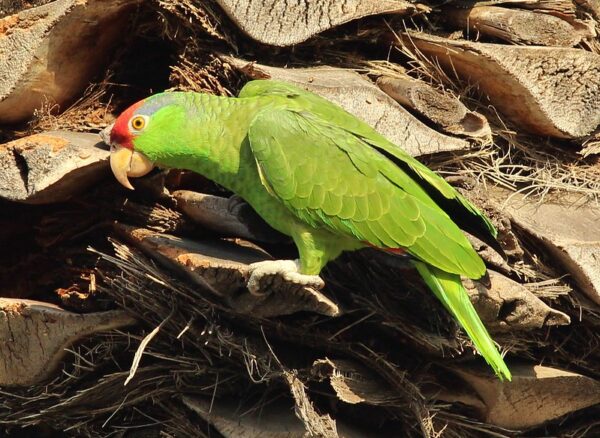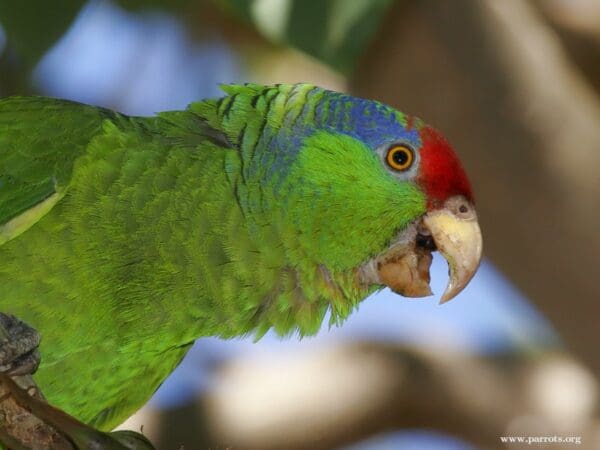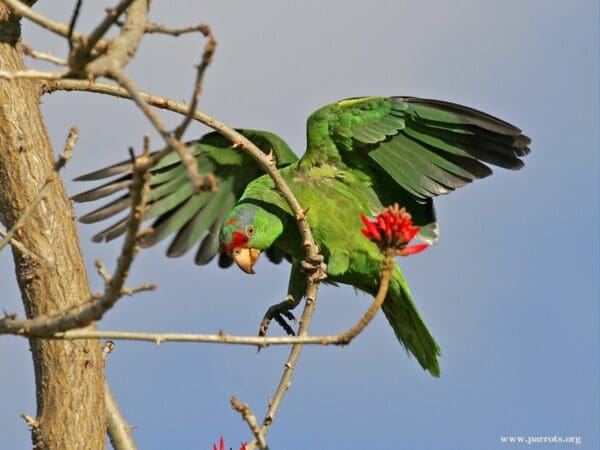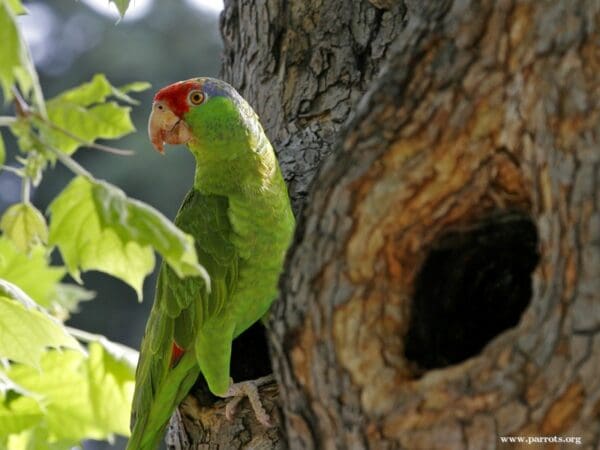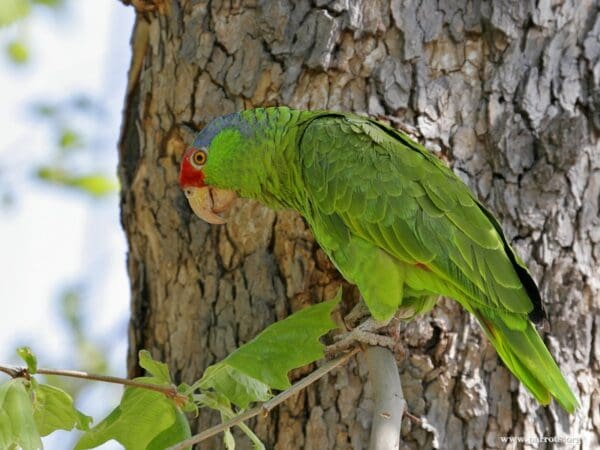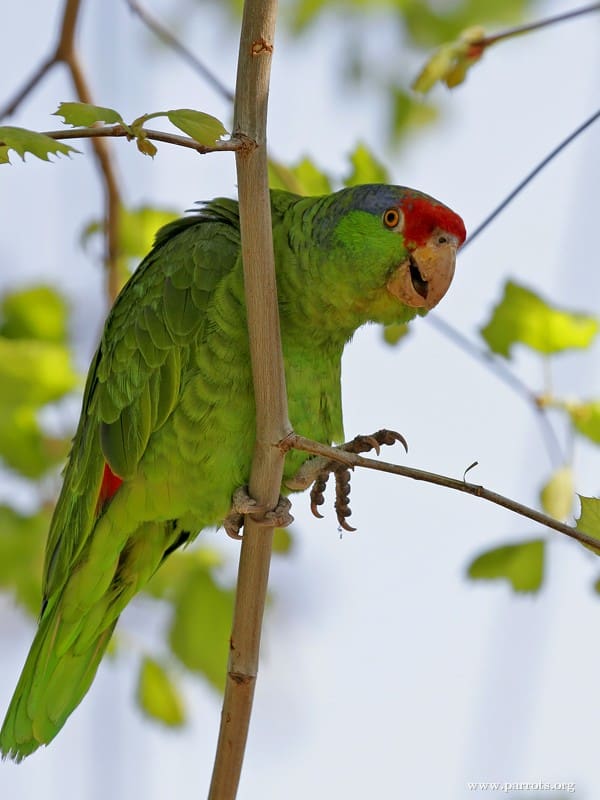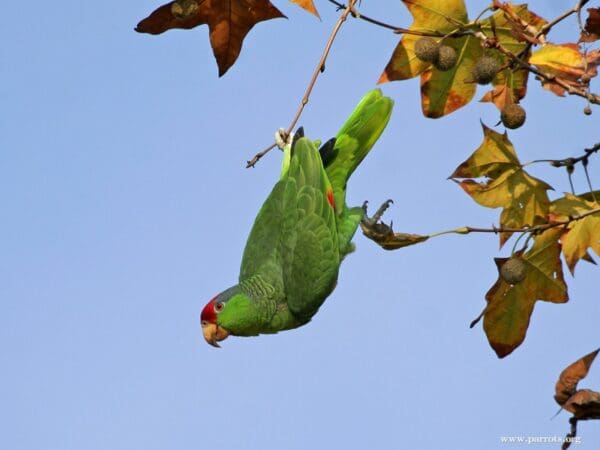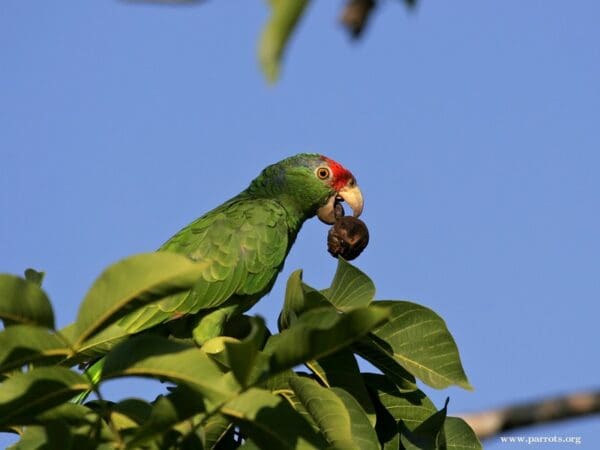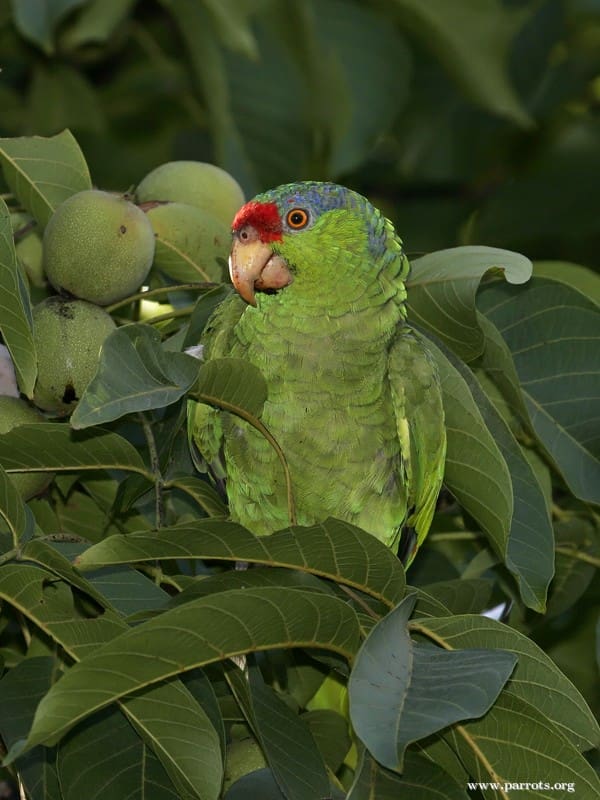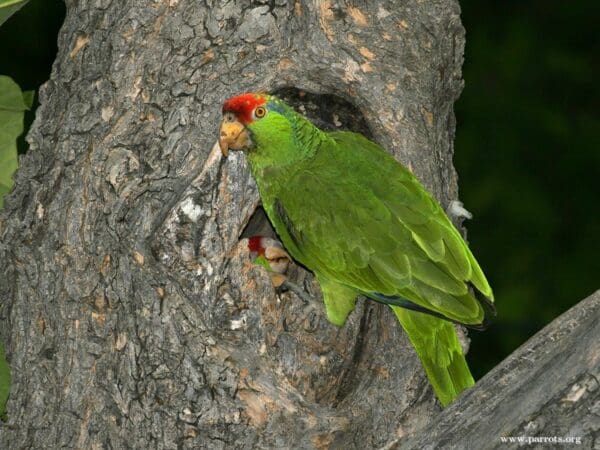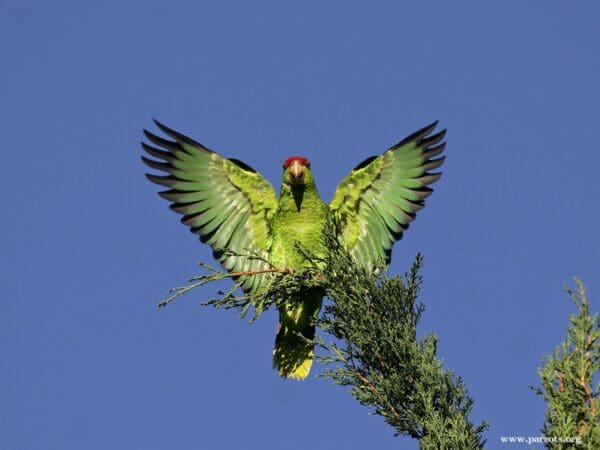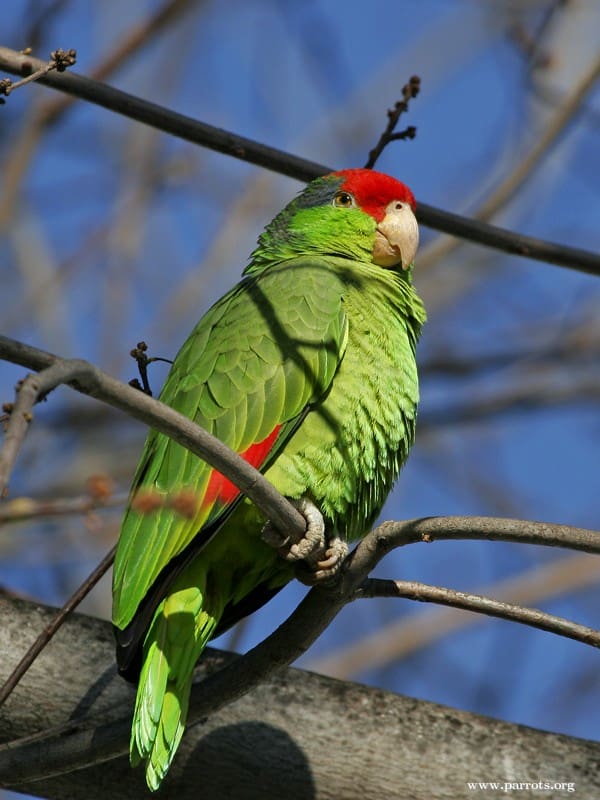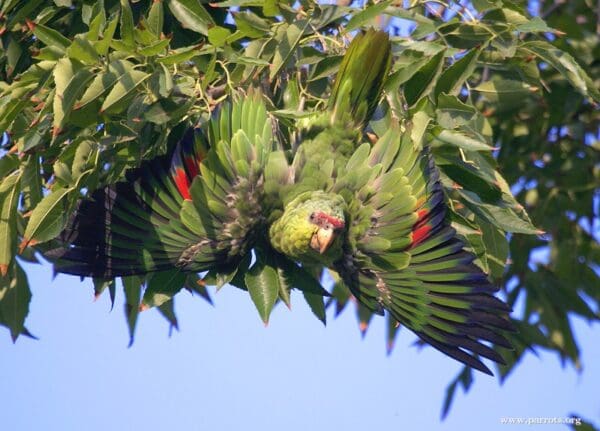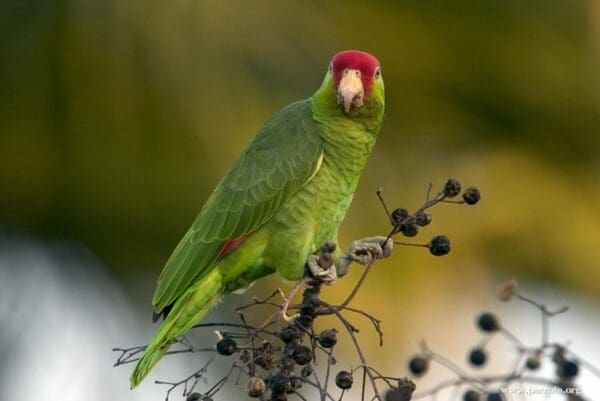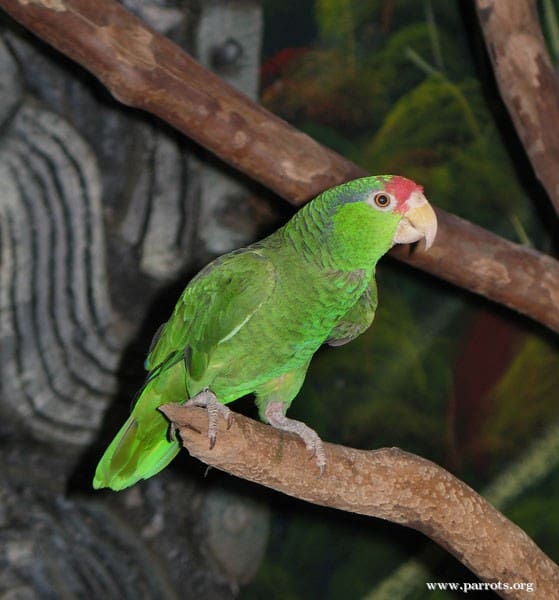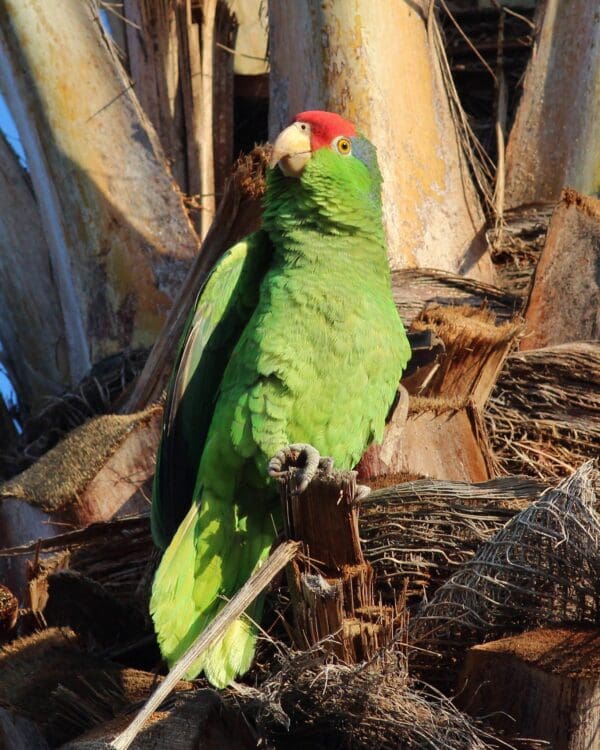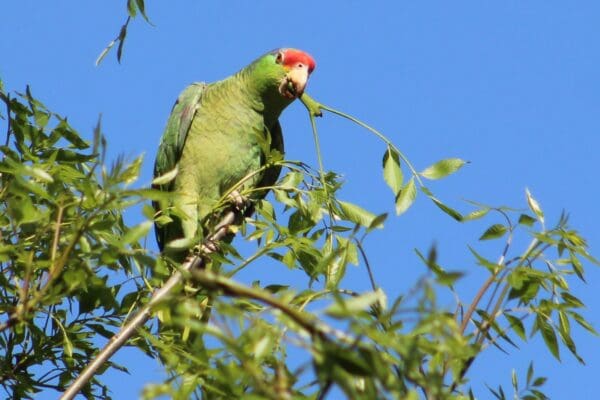Green-cheeked Amazon
Also known as:
Red-crowned Amazon (Parrot), Mexican Red-headed Parrot
Also known as:
Red-crowned Amazon (Parrot), Mexican Red-headed Parrot
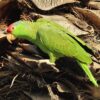
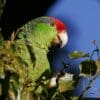
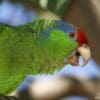
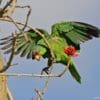
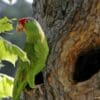
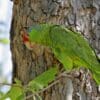
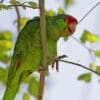
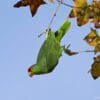
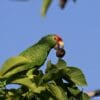
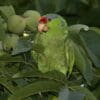
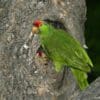
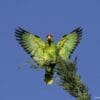
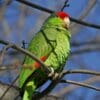
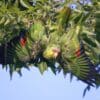
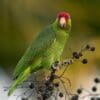
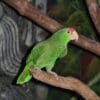
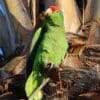

DID YOU KNOW?
The Green-cheeked Amazon is well established and its population is increasing in Los Angeles, CA but in the wild is Endangered.

Amazona

viridigenalis
Size:
30-33 cm (11.7-12.8 in).
Weight:
293-345 g (10.3-12.1 oz)
Subspecies including nominate:
one
Colour Adult:
Male-body green, with soft black margins to feathers of nape to mantle and upper breast; dark red forehead, crown and lores; purple/blue band from above the eye down the sides of the neck; at bases of secondary feathers 1-5 is red, the remainder green; green tail. Beak dull yellow. Eye ring pale grey, eye yellow. Female-red less evident on crown.
Colour Juvenile:
As in adult but with less red on head. Eye pale grey.
Call:
Contact calls fairly mellow reeoo…reeoo. Also barking rreh-rreh and rrak-rrak.
More Information:
Content Sources:
CITES
BirdLife International
Cornell Lab of Ornithology/Birds of the World
A Guide to Parrots of the World, Juniper and Parr, 1998
Parrots: Status Survey and Conservation Plan 2000-2004, Snyder, McGowan, Gilardi and Grajal, 2000.
Parrots of the World, Forshaw and Cooper, 1989. 2010 edition
Vanished and Vanishing Parrots, Forshaw, 2017.
Parrots of the World, Forshaw, 2006.
Parrots in Aviculture, Low, 1992.
Psittacine Aviculture, Schubot, Clubb and Clubb, 1992.
Avian Pediatric Seminar Proceedings, various authors, 1988.
Captive Status:
Fairly common in US; not as common elsewhere.
Longevity:
50-70 yrs.
Housing:
Aviary or suspended cage, minimum length 3 m (9.8 ft).
Diet:
Fruit such as: apple, pear, orange, cactus fruits, pomegranate, banana, forming about 30 percent of diet; fresh vegetables such as: carrot, celery, green peas, beans, fresh corn and green leaves. Cooked/sprouted beans or pulses; spray millet, small seed mix such as: millet, canary, and smaller amounts of buckwheat, oats, safflower and a little hemp, limited sunflower; complete kibble.
Enrichment:
Bathing; foot toys, destructible (non-toxic) toys, non-destructible (non-toxic plastic) toys, food-finder toys, preening toys, different texture and size hanging perch toys, fir branches, push-and-pull toys (sliding up and down), vegetable tanned leather toys.
Nest Box Size:
12″ x 12″ x 24″ (30.5 cm x 30.5 cm x 61 cm) vertical box.
Clutch Size:
2 to 4
Fledging Age:
9 weeks
Hatch Weight:
—
Peak Weight:
—
Weaning Weight:
—
World Population:
2000-4300 mature individuals. Rapidly decreasing.
IUCN Red List Status:
Endangered
CITES Listing:
Appendix I
Threat Summary:
Excessive exploitation for the caged bird market, persecution, damage to nesting trees from trappers, and the long-term loss of habitat (over 80% of Tamaulipas lowlands cleared for agriculture).
Range:
Found in NE Mexico. Feral populations occur in other parts of Mexico, and in Texas, California, Florida, Oahu and Puerto Rico.
Habitat:
Semi-deciduous tropical woodland and Tamaulipan scrub with thorn-bearing legumes in ravines and along rivers.
Wild Diet:
Seeds and fruit of ebony, strangler fig, coma, and anacua (Ehretia anacua) and some insects; less often chinaberries, acorns and pine seeds. Feral birds have adapted to local food, where at least 34 sources have been identified (S California).
Ecology and Behaviour:
Occurs in larger flocks in non-breeding season, foraging across many tens of kilometres. Sometimes socialises with Yellow-cheeked (Red-lored) and Yellow-headed Amazons. Roosts communally in tall trees on ridges.
Clutch and Egg Size:
2 to 4 rounded eggs, 36 x 27 mm (1.4 x 1.0 in).
Breeding Season:
April-May; nest is in tree cavity.
Related Links:
